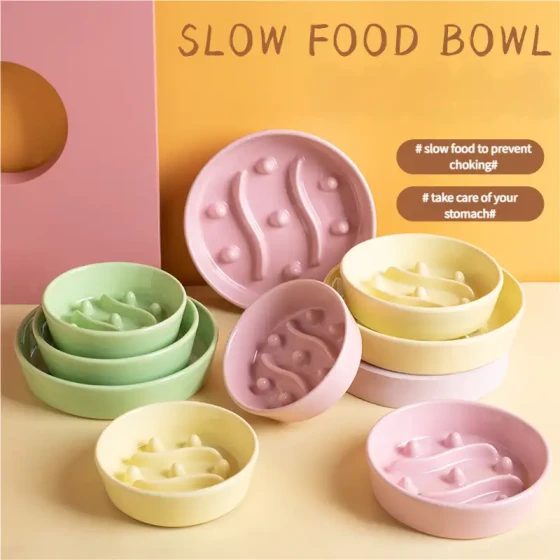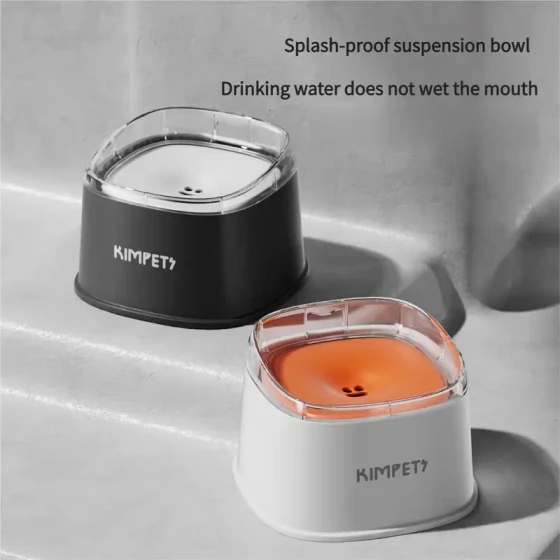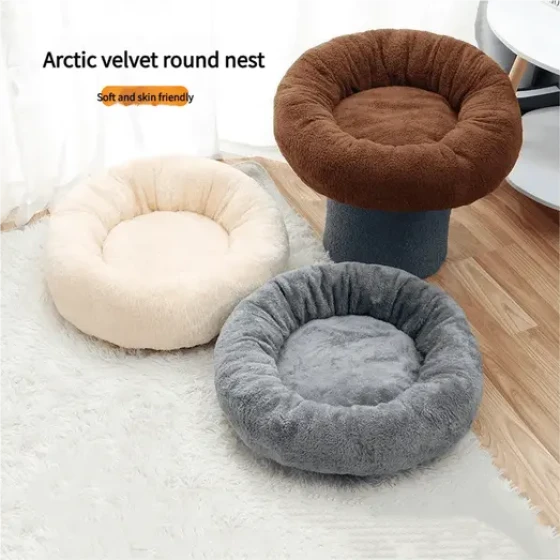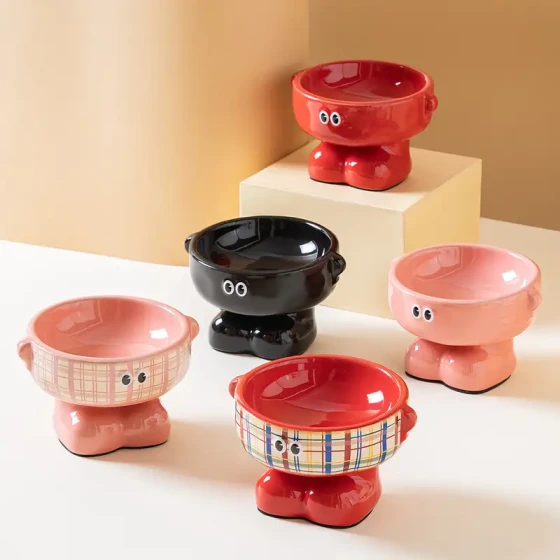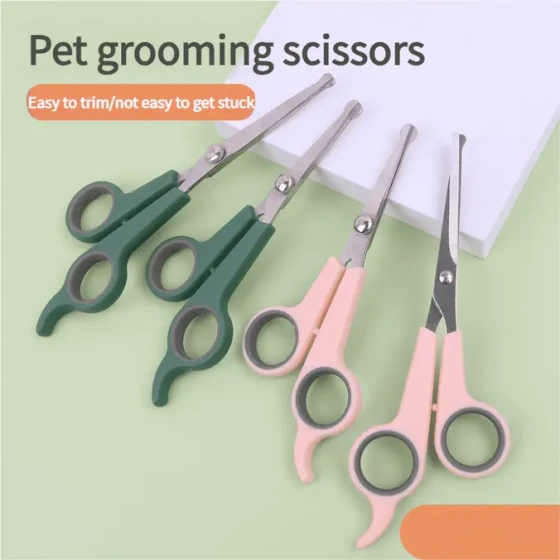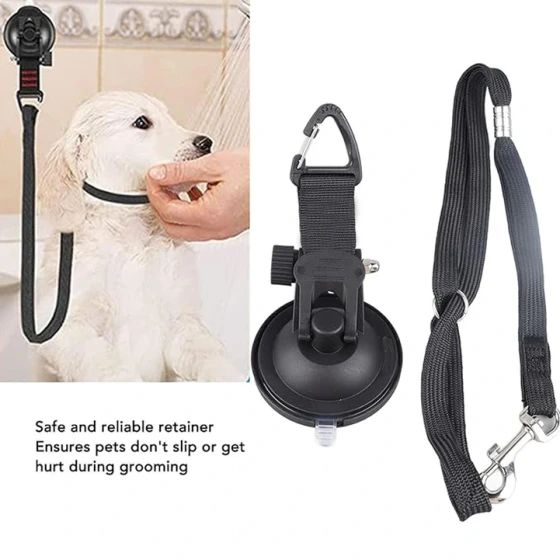Morphological Characteristics of the Bouvier des Flandres
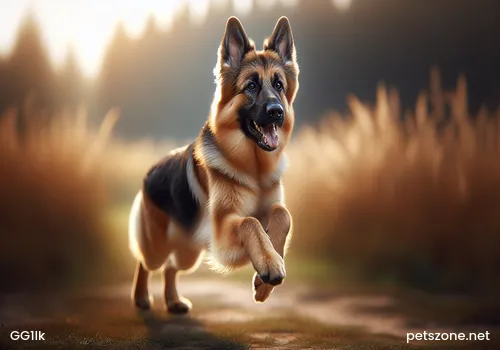
Bouvier des Flandres (Detailed Introduction)
The ideal shoulder height for male Bouvier des Flandres should be 24.5 inches to 27.5 inches; females about 23.5 to 26.5 inches. For either sex, a shoulder height greater or less than this range is considered a serious fault. Proportion: The length of the body (from the front of the shoulder blade to the pelvis) should be equal to the shoulder height. Dogs with a body too long are faulty and will be penalized severely.
Morphological Characteristics
Build: Strong structure, sturdy bones, well-developed muscles, with no signs of heaviness or clumsiness.
Head
The head proportions make a deep impression, especially the whiskers and beard. Well balanced with the body and bodily structure. Expression: Bold and alert. Eyes: Neither protruding nor sunken in the eye sockets. Oval-shaped, with the axis horizontally placed when viewed from the side. Eye color is dark brown, eye rims are black, with no pigment deficiency; the nictitating membrane is barely visible. Yellow or light-colored eyes are a serious fault; almond-shaped or glaring expressions are also faults. Ears: High and wide set. If cropped, the contour is triangular and size proportionate to the head. The inner corners align with the outer corners of the eyes. Ears set too low or too close together are serious faults. Skull: Very developed and flat, width slightly less than length; the outline of the skull is parallel to the outline of the muzzle when viewed from the side. The distance between the ears is wide, with a faint groove visible at the front. Stop: Due to erect eyebrows, the stop appears more pronounced than it actually is. The ratio of skull length to muzzle length should be 3:2. Muzzle: Broad, solid, full; gradually tapers towards the nose tip but should not appear cut off or too pointy. Narrow or truncated muzzles are faults. Nose: Large, black, well-developed, edges rounded, with wide nostrils. Brown, pink, or stained noses are serious faults. Cheeks flat and sloping; lips dry (no loose skin) and tight. Strong upper and lower jaws of equal length. Teeth: Strong, white, and healthy with scissor bite. Overbite or underbite are serious faults.
Neck
Solid, muscular, gradually widening towards the shoulders. From the side, the neck is gently arched and proudly carried. Short and thick necks are faults. No excess skin.
Back: Short, wide, muscular with a level topline. Firm yet flexible back with no signs of weakness. Body or torso: Strong, broad, and short, with a wide chest reaching the elbows. Ribs deep and well sprung. The first rib slightly curved; other ribs well sprung and sloping backward, giving correct chest depth. Flat or slab-sided ribs are serious faults.
Loin or waist: Wide, short, and muscular with no slackness. Abdomen very slightly tucked up. The topline subtly continues into the curve of the hips which are particularly broad. A hollow or sloping croup is a serious fault.
Tail: Docked, retaining 2 to 3 vertebrae. Set high, aligned with the sacrum. Carried high when moving is preferred. Dogs born without tails are not faulted.
Forequarters
Bone solid, muscles developed, straight. Shoulder blades fairly long and muscular but not stiff; shoulder blades slant backward. The length of the scapula and upper arm are approximately equal; standing, the formed angle is slightly more than 90 degrees. Steep shoulder blades are faulted. Elbows: Close to the body and parallel to each other. Elbows placed too close or too far from the body are faults. Viewed from any side or front, forearms are perfectly straight, parallel, and perpendicular to the ground. Muscles well developed and bones solid. Wrists: In line with the forearm, bones strong. Pasterns: Quite short, slightly slanted. Dewclaws may be removed. Front and rear feet are round, compact, neither turned out nor inturned; toes tight and arched; nails black and strong; pads thick and hard.
Hindquarters
Sturdy, muscular with broad, powerful thighs. Viewed from front or back, they are parallel to the forelegs. Legs: Moderate length, muscular, neither too straight nor too angled. Proper hock joint angle. Hocks: Strong, close to the ground. Standing and viewed from behind, hocks are straight and parallel. When moving, they neither turn outwards nor inwards. Slight angle at the hock joint. Sickle legs or cow hocks are serious faults. Metatarsals: Strong, slanted, round, vertical when standing. Dewclaws, if present, must be removed. Feet the same as forefeet.
Coat
Coarse, double coat able to endure hard work in various harsh climates. Outer coat rough and harsh; undercoat fine, soft, and dense. Coat may be trimmed slightly to highlight body contours. Overtrimming that destroys the natural rough appearance should be avoided. The “jacket” (body coat) feels rough and dry to the touch; if necessary, it can be trimmed to about 2.5 inches length. Too long, too short, silky, or woolly coats are faults. Coat is rough but not curly. Hair on the head is short; hair on the upper back is particularly dense yet still retains a waterproof layer. Flat coat showing lack of undercoat is a serious fault. Whiskers and beard: Very thick; hair above the muzzle short and coarse. Upper lips have heavy whiskers, and the chin has thick, coarse beard forming a rugged expression characteristic of the breed. Eyebrows: Upright hair emphasizes eye shape but must never cover the eyes.
Color
Ranges from fawn to black, including salt and pepper, gray, and brindle. Small white star-shaped marks on the chest are allowed. Among the allowed colors there is no preference for superiority.
Gait
Judging the Bouvier des Flandres must consider the overall picture; the gait should be stretched, free, and proud corresponding to the body structure. Forequarter extension should match the rear drive in balance. The back remains stable and level during a fast trot. Usually, the correct gait shows accuracy in body structure and conformation. Thus, if the Bouvier des Flandres’s body structure is reasonable and precise, the tracks at a fast trot should form a single track.
